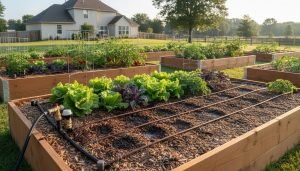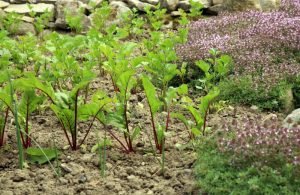Last Updated on September 10, 2025 by teamobn
Sweet corn is one of the most popular vegetables in supermarket produce bins. With a little space and planning, you can grow some in your own backyard. In fact, even though corn requires considerable garden space, many gardeners grow the crop because of the unrivaled sweetness of fresh, homegrown ears.
Establish a planting site in a sun-drenched, wind-protected area in your backyard and you too can do backyard corn growing.
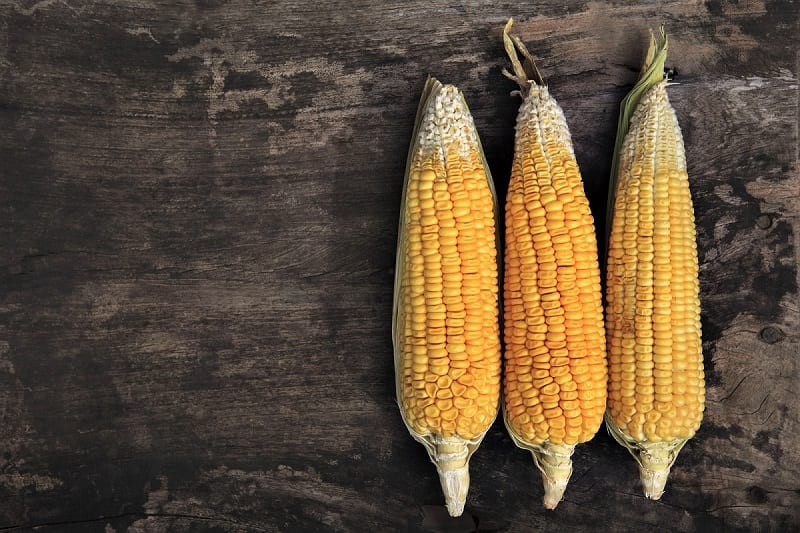
Backyard Corn Growing Guide
Contents
If you have never planted corn, the first thing you should know is that corn does not thrive in cold weather. Make sure you wait two weeks after the last spring frost before setting out to sow corn seeds.
Soil temperature needs to be above 16°C for successful germination. If you are planting a super sweet variety, wait until the soil is around 18°C.
Corn is a voracious feeder. The plant is always especially hungry for nitrogen. That’s why corn crops thrive in places previously planted to soil-enriching vegetables like beans, hairy vetch, or clover.
Corn does not transplant well, either. If you garden in a region with a short growing season, start your corn crop indoors using biodegradable pots. That will allow you to avoid disturbing the roots at transplanting time.
Here’s how to grow corn in your backyard.
Preparing the Site
Much of the success of your corn crop will depend on the condition of your soil. The best way to prepare the soil for a corn crop is to plant a legume as a cover crop in the fall. Otherwise, you can amend your soil with about 3 to 4 inches of compost. Depending on the results of your soil test, you can also add a high-nitrogen fertilizer to your planting bed.
To promote pollination, plant corn in blocks rather than long, individual rows. Each block should be at least three rows deep. The rows in each block should be spaced 30 to 26 inches apart.
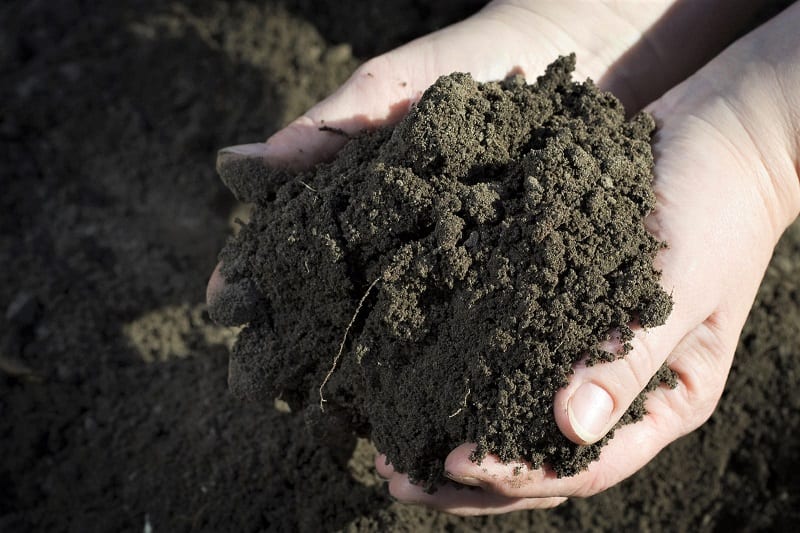
Planting Corn
When planting in early spring, sow the seeds in inch-deep holes the soil. In midsummer, plant them 2 inches deep. Plant three seeds together every 7 to 15 inches. The seeds should germinate within 7 to 10 days, at which time you should thin your crop to one plant every 15 inches. Remove unwanted seedlings by cutting them off at soil level.
If you are planting corn for fresh eating, grow a minimum of 10 to 15 plants for each member of the family. To extend your harvest, sow an early-maturing variety every 2 weeks over the course of 6 weeks. You might also consider planting early, mid-season, and late-season varieties at the same time. You can avoid cross-pollination by keeping different corn cultivars 400 or more yards apart.
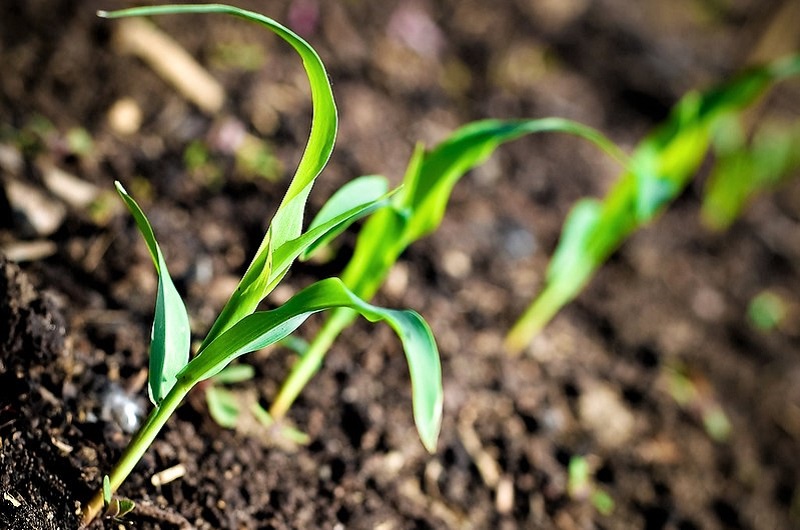
(Photo: Ryad Hyde/Flickr)
Tending to Your Corn Patch
Corn cannot compete with weeds. This means you will need to weed aggressively throughout the first month of growth. You will begin to see the plants spread roots within two months of planting. Take great care not to disturb the delicate roots while disposing of weeds. Better yet, spread a layer of mulch over the area to prevent weeds from sprouting on your corn patch altogether.
Corn needs an inch of water a week, particularly when the stalks begin to tassel. Water the plants regularly. Corn plants that suffer water stress during pollination yield ears with missing kernels. Water at soil surface by using a soaker hose or drip irrigation.
Water your corn patch deeply during dry spells and after silks appear on the ears. You should avoid spraying water from above. Doing so could wash pollen off the flowering tops.
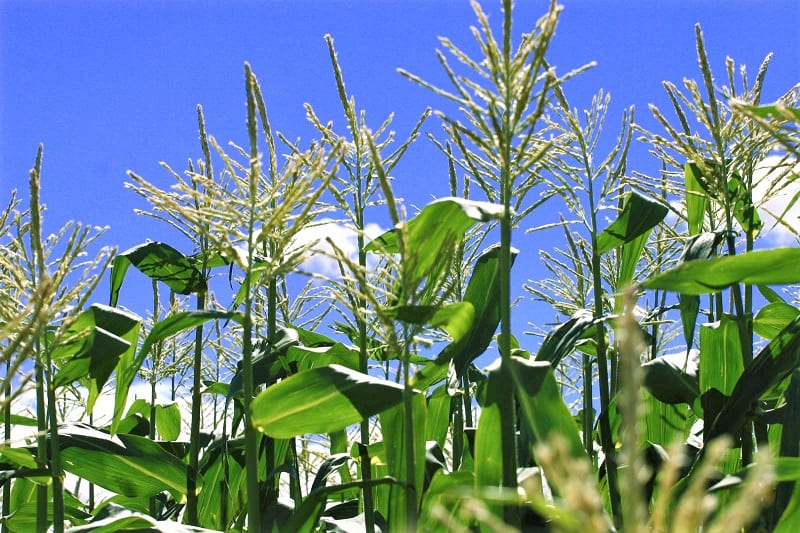
Fertilizers and Hand Pollination
Side-dress your corn patch with bone meal or fish-based fertilizer once the plants are 6 inches tall. Repeat the feeding when the stalks are knee-high. Do not remove any side shoots or suckers from your patch. They will not affect your harvest and cutting them might damage your crop’s root systems.
While the wind will pollinate the plants, a conscientious gardener will complement nature’s work by hand pollinating his corn crop. In the early morning, when there is no breeze, gently shake the pollen from the tassels onto the silks of the ears.
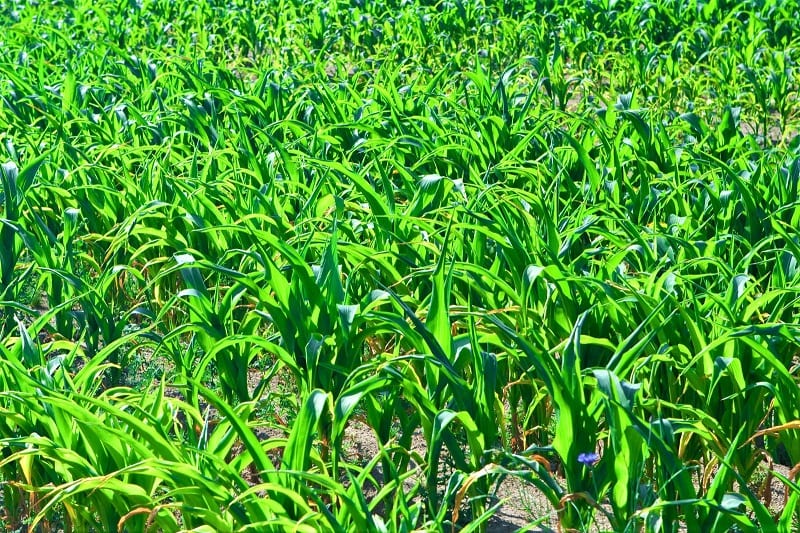
Corn Borers and Earworms
Corn earworms are a common problem among corn crops. You can use a mixture of vegetable oil, Bacillus thuringiensis, water, and a few drops of dishwashing liquid to manage earworm populations in your corn patch. Pour the mixture into a spray bottle and apply it onto the tip of each ear several days after the silks emerge.
You may have to deal with European corn borers, too. Corn borers feed on corn foliage, especially near the top of the stalk where the leaves emerge. They will eventually eat their way into developing corn ears.
When applied early, Bt and spinosad are effective against this pest. Corn borers overwinter as full-grown larvae in weed stems and old cornstalks. Pull up and destroy these winter refuges to break the corn borer’s life cycle.
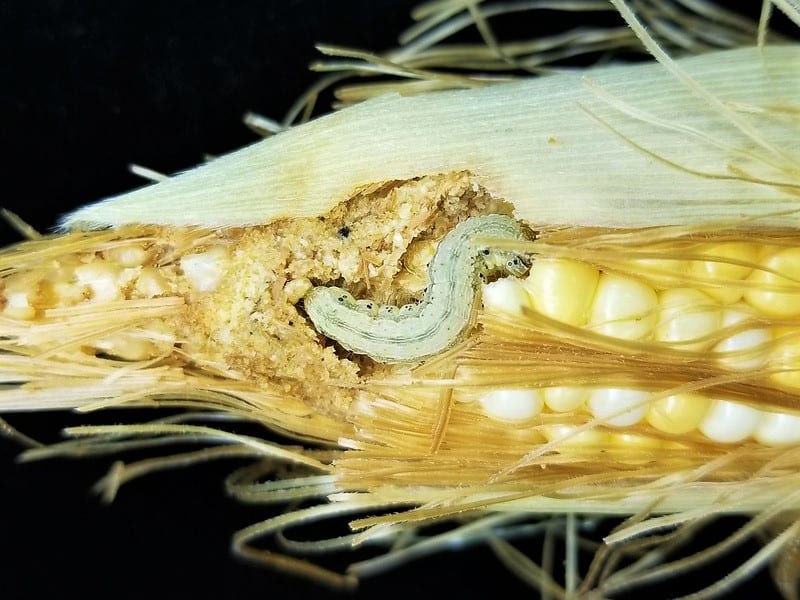
Corn Smut and Good Gardening
Corn smut is a fungus that distorts corn kernels, turning them gray. The fungus makes pale, swollen galls that burst to release powdery black spores. Cut off and dispose of the galls before they open. If necessary, destroy the affected plants and dump them in the trash bin. Do not add the plants to your compost pile.
Good vegetable gardening practices are by far the best defense against pest and disease in the corn patch. Keep a clean garden, practice crop rotation, use water wisely and grow corn only when and where it is sure to thrive. You can also try growing corn varieties that are bred to resist pests and diseases.
Harvesting Corn
You can begin harvesting your corn crop when the tassels begin to turn brown and cobs start to swell. This usually happens three weeks after the corn silks appear. Pull back the husk and, with your thumbnail, pierce a kernel. If a milky liquid pops out, your corn is ready for harvesting. Pull the ears downward and twist to free it from the stalk.
Sweet corn varieties begin to lose their sweetness soon after harvesting, so eat any corn you harvest as soon as possible. Otherwise, store the corn in the refrigerator or freezer. Ears on the same stalk usually ripen a few days apart. Completely dry silk means the ear is past its prime.
Companion Planting for Backyard Corn
Backyard corn growing benefits from smart companions. You’ll improve pollination, soil life, and pest balance with the right mix. Plan layers that feed roots, attract allies, and shade soil for steady moisture.
The Three Sisters synergy
Corn, pole beans, and squash form a time-tested guild. Beans feed nitrogen to stalks. Squash shades soil and suppresses weeds. Stagger sowing so corn leads, beans follow, and squash trails. Keep hills or blocks tight for wind pollination. This living scaffold reduces inputs and handwork. The trio remains a simple way to strengthen backyard corn growing across a full season.
Beneficial flowers and insect allies
Add calendula, dill, alyssum, and cosmos along block edges. These nectar plants recruit lacewings, hoverflies, and parasitic wasps. Predators patrol tassels and silks where pests gather. Stagger blooms for continuous forage. Keep flowers low so they don’t shade young corn. Spot-water during heat spikes. This integrated border supports natural control and steadier yields in backyard corn growing with minimal sprays or dusts.
Soil builders and living mulch
Sow white clover in paths or between blocks after corn reaches hand height. Clover fixes nitrogen and cushions foot traffic. Its shallow roots won’t outcompete deep corn roots. Top-dress with compost at knee-high, then clip clover to feed soil biology. Moist, covered ground cools during heat waves. The practice supports resilient root zones and steadier ear fill in backyard corn growing.
Trap crops and pest pressure
Plant a sacrificial band of earlier, non-critical corn near windward edges. Monitor silks daily. Apply oil or Bt when pests appear there first. Remove infested tips to keep pressure off main blocks. Rotate the band spot each year to break cycles. Pair with sticky cards for moth monitoring. This targeted buffer protects prime rows without blanket treatments or heavy labor.
Dealing with Space Limits in Small Backyards
Tight lots can still deliver great ears with careful layouts. Focus on dense blocks, quick maturity, and reliable pollination. Dial in soil fertility and water so every plant pulls its weight. Backyard corn growing stays practical when spacing and timing are precise.
Raised beds and block layouts
Choose 4-by-4 or 4-by-8 beds to form square blocks that catch wind-borne pollen. Plant short-season varieties at 8 to 10 inches, then thin to 12 to 15. Keep rows three or four deep. Use drip lines for even moisture. Feed lightly but often. Beds warm early, drain well, and simplify weeding. This structure keeps small spaces productive without sacrificing ear size or sweetness.
Containers and fabric grow bags
Use 15 to 25 gallon fabric pots for each cluster of three to four plants. Fill with compost-rich mix and slow-release organic nitrogen. Site pots as a mini block to aid pollination. Stabilize stalks with low ties on a square trellis. Water daily in heat. Rotate pots to chase sun if fences shade. Containers let renters and patio gardeners harvest real, tender ears.
Pollination hacks for tight spaces
Shake tassels gently over silks on calm mornings. Collect pollen in a paper cup and dust silks to fill gaps. Plant in short, synchronized bursts rather than long rows. Avoid mixing types that cross and muddy flavor. Keep water steady during tasseling to prevent missing kernels. Mark sowing dates on tags. Simple, consistent habits deliver full, uniform cobs even in compact plots.
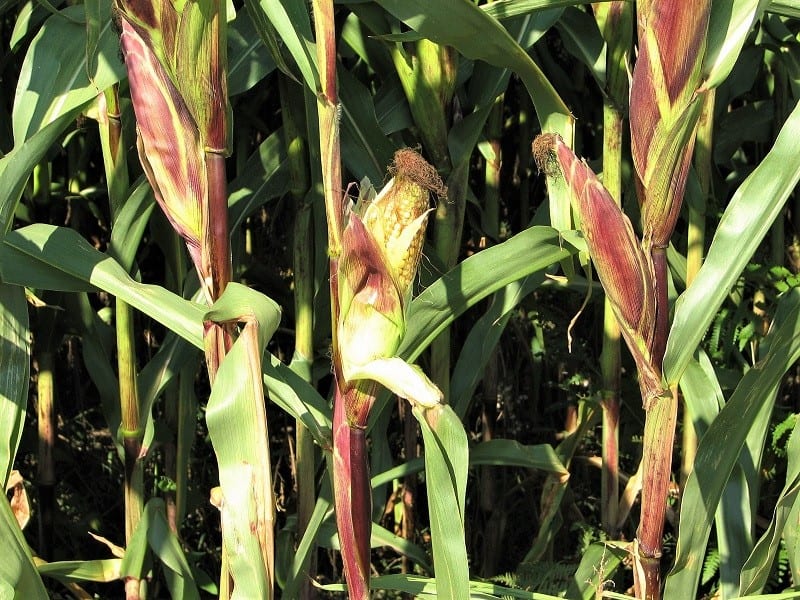
Organic Pest and Disease Control
Expect pests and diseases to obstruct your backyard corn growing effort. These are the ways you can protect your crops:
Start with prevention and crop rotation
Prevention anchors resilient backyard corn growing when you match resistant varieties to local pressure, rotate away from corn and grasses for two to three years, and clear residues that harbor pests. Build soil with compost and balanced nitrogen so stalks develop thicker cuticles and stronger vascular tissue, which helps plants tolerate feeding and recover after minor injury. Keep bed edges weed free to remove alternative hosts and reduce humidity that fuels foliar disease.
Scouting cadence and action timing
Consistent scouting turns guesswork into timing, which matters more than product choice when populations rise quickly. Inspect whorls, leaf collars, tassels, and silks twice weekly while carrying a hand lens, and record frass, chew patterns, and egg clusters so thresholds guide treatment instead of anxiety. Align interventions with pest stage because very young larvae stay exposed on surfaces while older larvae hide in stalks and ears where sprays can’t reach.
Earworm control at silk stage
Corn earworm pressure often spikes during warm, still evenings, which makes silk protection decisive for ear fill and tip quality. After pollination finishes, apply a drop or two of food grade oil mixed with Bt into the silk channel, and repeat after heavy rain to maintain coverage that lingers where larvae enter. Keep beneficial activity high by treating at dusk and limiting drift onto flowers that draw bees and hoverflies.
European corn borer windows
European corn borer is most vulnerable before tunneling when larvae graze on leaf collars and upper sheaths that you can actually coat. Calibrate Bt kurstaki or spinosad to moth trap catches and degree-day models so sprays land during hatch rather than after boring begins. Remove and trash stalks after harvest because overwintering larvae survive in residues, which restarts the cycle right where backyard corn growing should be strongest next year.
Managing smut, rusts, and leaf blights
Smut galls should be cut out while firm and bagged immediately because spores multiply rapidly once tissues burst, and composting reintroduces inoculum where you least want it. Prioritize airflow with wider in-row spacing, strip persistently spotted lower leaves, and irrigate at soil level so canopies dry fast after sunrise. Choose disease-tolerant seed and keep fertility steady, since swings in nitrogen often trigger soft, sappy growth that blights exploit.
Beneficial insects and floral borders
Predators and parasitoids perform best when you feed them, which means planting alyssum, dill, calendula, and coriander along bed margins to supply nectar through heat waves. Lacewings, hoverflies, and tiny wasps patrol tassels and silk zones where caterpillars start, and they respond to continuous bloom more than occasional releases. Avoid dusty leaves by watering soil rather than foliage because dust weakens natural enemies and interferes with gas exchange across stomata.
Water, mulch, and sanitation for resilience
Steady soil moisture reduces stress signals that attract sap feeders, and drip or soaker lines keep leaves dry while delivering uniform water during tasseling, which prevents missing kernels. Mulch paths to cut soil splash that moves spores and to cool root zones during heat spikes, then remove plant debris promptly so pests lose shelter between successions. Document varieties, pressure, and outcomes so backyard corn growing improves each season with sharper timing and fewer inputs.
Conclusion
Backyard corn growing rewards careful timing, steady water, and clean beds. Strong soil and tight block layouts keep pollination reliable and ears full. Scout often, act early, and favor gentle controls so pests never snowball. Harvest at peak milk stage, then chill or cook fast to lock in sweetness. Keep notes, refine spacing and varieties, and backyard corn growing gets better every season.

